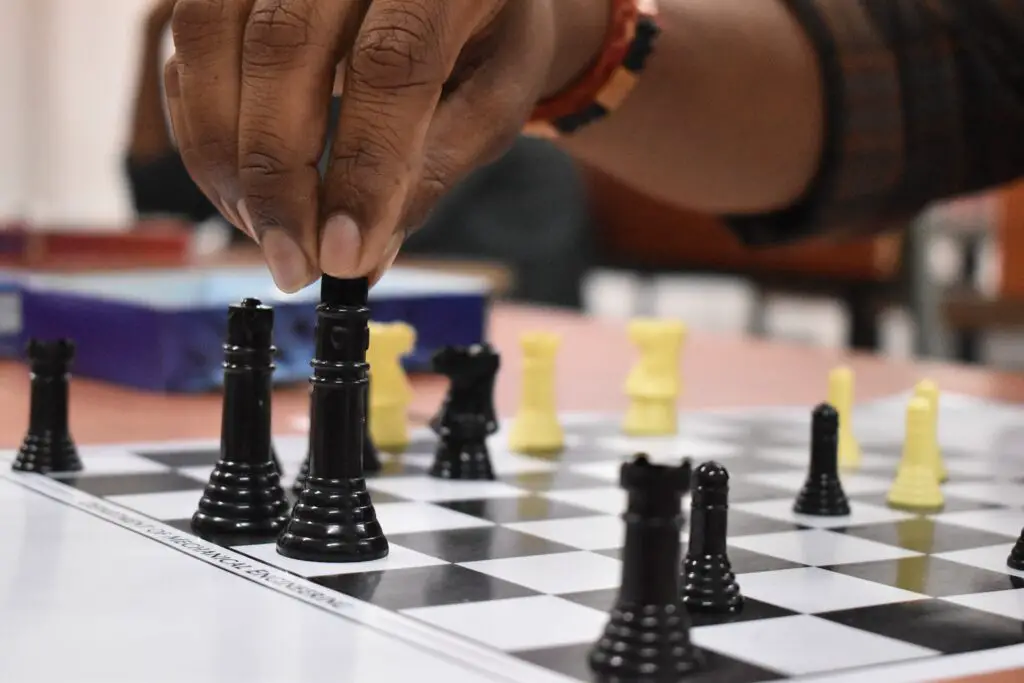The Decision-Making subtest is the second subtest of the UCAT, designed to test a candidate’s logic and reasoning abilities.
The biggest complaint about this subtest that students have is “it’s an IQ test, and some questions are simply too challenging to answer, even with lots more extra time!”.
Others complain that the logic questions are quite nasty, but that’s when your triage skills will come into play!
In my opinion the difficulty in this subtest is the fact that there are so many different question types. Lets explore all of them, and the different tactics you can use!

Ace The Decision-Making Subtest
Format
- 31 minutes for 29 questions
- The questions are all individual questions as opposed to set based. Tables or diagrammatic information only applies to that current question, therefore.
- Around 1 minute to answer each question.
- Wide range of questions that require much less than a minute, or much more than a minute to answer.
- The best strategy is to start with the easy questions first, and leave the time-consuming questions till the end! One of the hardest things is deciding which will take time, and which won’t.
Important to note that unlike some other sections, some DM question types are worth 2 marks.
Lets explore how you can start attacking each of these question types!
Question Types
- Syllogism
- Initial statements followed by five conclusions which you must decide yes or no depending on whether the conclusion follows from the initial statement.
- Worth 2 marks
- Logic puzzles
- Will have rules and statements which will require matching various elements
- Strongest argument questions
- Select the answer that relates to the original question most strongly and relevantly.
- Can be either strengthening it or attacking it.
- Inference questions
- Select an answer that is a valid conclusion from the data shown. These are displayed in 5 part format (much like syllogisms).
- are worth 2 marks
- Much more text than syllogism and can include graph and other visual data
- Partial marks = 1
- Maths questions
- Involves percentages and probabilities. The calculations required can be quite similar to quantitative reasoning, but in this section, you will find the questions are often probability, or fraction based. They may ask which drug is more efficient at preventing disease, after giving you a set of statistics about 2 drugs.
Marks awarded
- Syllogism and inference questions are only questions with 5 answer options
- All the rest have 4
- 4 part questions are all awarded single marks.
- All 5 part questions (syllogism and inference) are worth 2 marks if you get all 5 questions correct.
- Two mark questions also attract partial marks when the question isn’t fully correct. No one knows the partial marking criteria, but it seems getting 3 or 4 out of 5 marks in any given question may get you a partial point.
- This potentially makes them more valuable depending on how long it takes to complete. Syllogisms and inference questions are often a good question type to attempt as they can be relatively straightforward, not too time-consuming, and there is the potential of getting partial marks even if you didn’t get the entire question correct.
The best strategy with any given question
Because of the diverse types of questions, it may look like you need to learn a different set of strategies for each.
You will come up with your own ways of answering each type of question as long as you practice enough so don’t worry about that.
There are however some general strategies to employ in order to ace the subtest!
- Always read the scenario first – This isn’t verbal reasoning where you can get away with skimming. You must have a good grasp of where everything is in the paragraph before you start trying to answer the question. Obviously it’s a good idea to take a quick glance at keywords from the question just so you know what you’re looking for, but you mostly should have a decent understanding of the paragraph, graph, table, Venn diagram, or statements before you attempt the question.
- Take notes and eliminate answer options – Often with these questions, you get given a lot of information! it’s easy to forget sometimes. Take little notes as you go along. This is the most important tip for logic puzzles and syllogism type questions. Immediately you get a syllogism, start drawing out the associated Venn diagram because it will help you greatly! You can learn all the Venn diagram patterns from this video.
- Draw grids for logic – Immediately you encounter a logic puzzle, you should start thinking about how you will represent it diagrammatically. Most logic puzzles on the UCAT cannot be fully solved, only partially. It is just easier to see a partial pattern diagrammatically than just written as statements. My best strategy was always to use punnet-square style grids and just fill in the information as I go.
- Check the puzzle questions – I know I said to go straight to the scenario earlier but this is important! Logic puzzles often don’t have to be fully solved. You can get the answer without even needing to do much work. Always check what the question wants because you don’t want to end up looking for an answer you solved 5 minutes ago.
- Brush up on your algebra and fractions – While questions don’t ask you directly about algebra and fraction questions, you need to have a pretty solid basis in GCSE maths. Things like adding, multiplying and subtracting fraction are important skills to have.
- Skip the most difficult questions – Don’t even waste time flaggin unless you are certain you can solve it with a bit more time! It isn’t a rule to do these questions in order, so never do questions in order! even for the other subtest! Develop a keen eye for the questions that will take more time, and you will find your scores going on the up and up!
We have talked a lot of various different types but the best way to learn is to actually practice questions. Lets try that now!
Question
Hopefully, that question wasn’t too much trouble for you. Unfortunately, one question won’t do it! And with so many different question types in this subtest, you’re gonna need to practice a lot more! Head over to our free practice section to continue the UCAT revision grind. I’ll be seeing you there!


[…] DECISION MAKING […]
Sorry, I was a bit confused with this question! In the answer it is mentioned if “Chrissy was in 3… this would mean that Nancy teaches in the room next to the Photography lesson (which must be in 2), which violates the rule that she teaches in the room next to Drama.”
Could this be explained further please? I am struggling to see in the question that Nancy can’t teach next to Drama